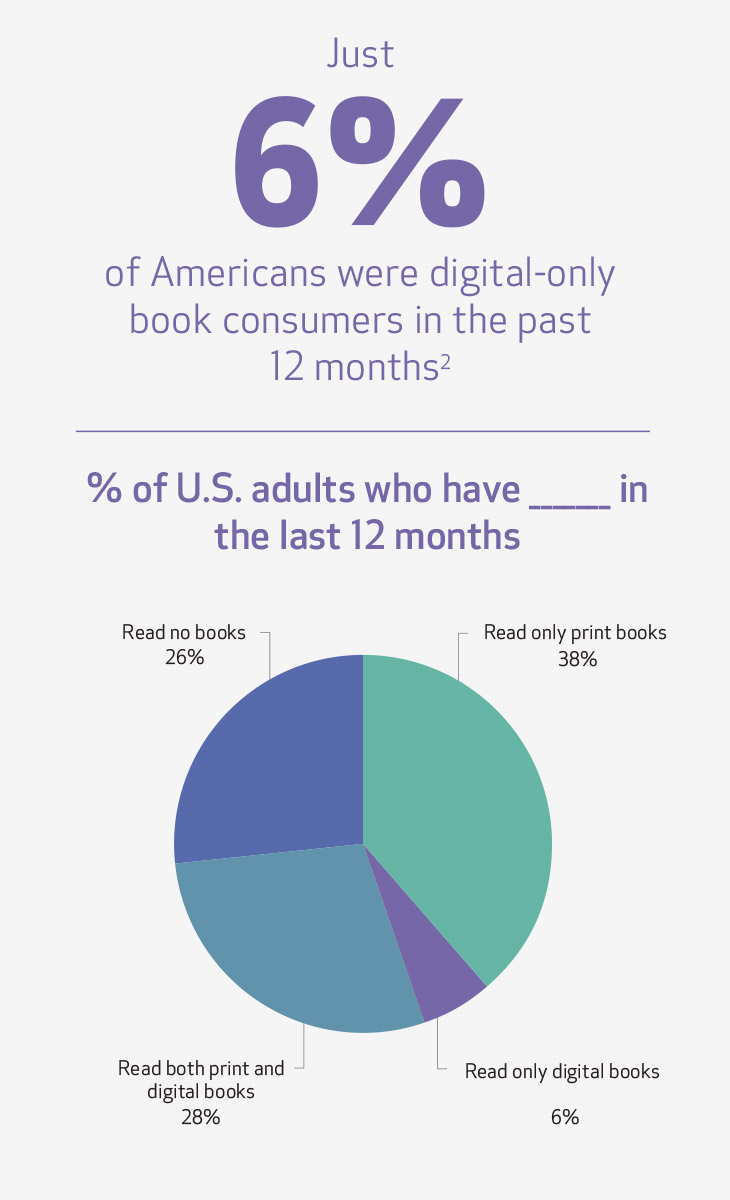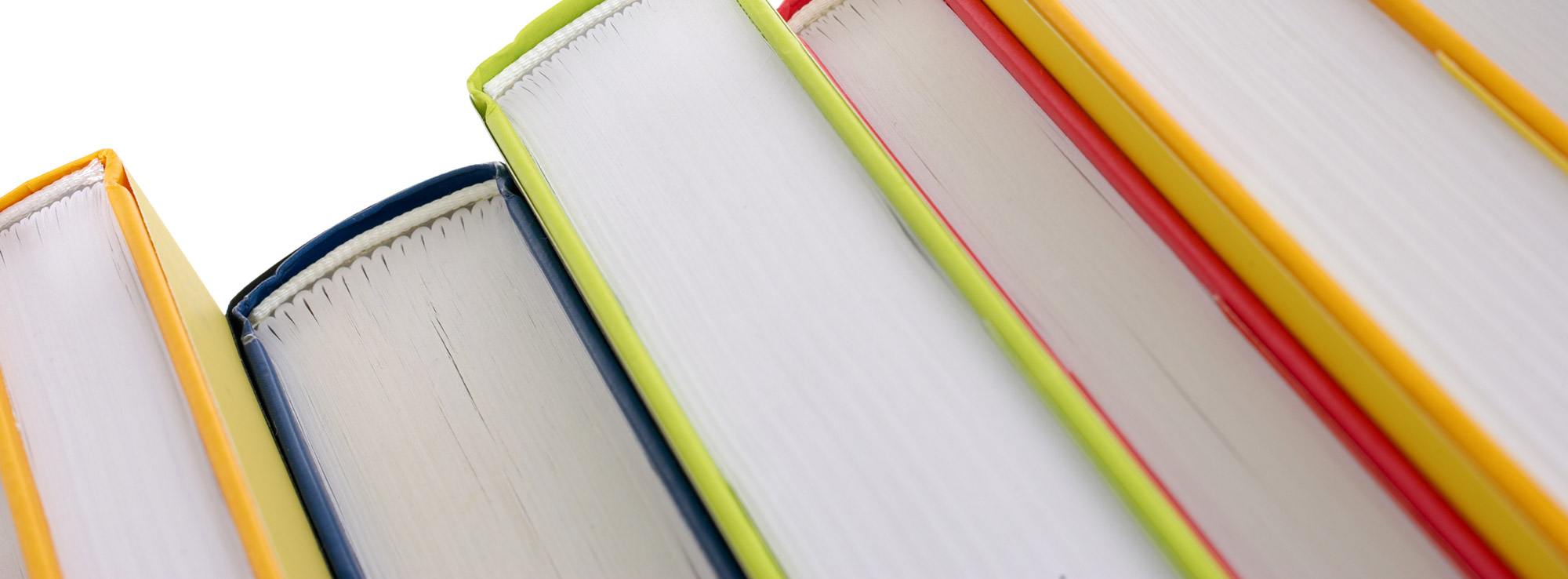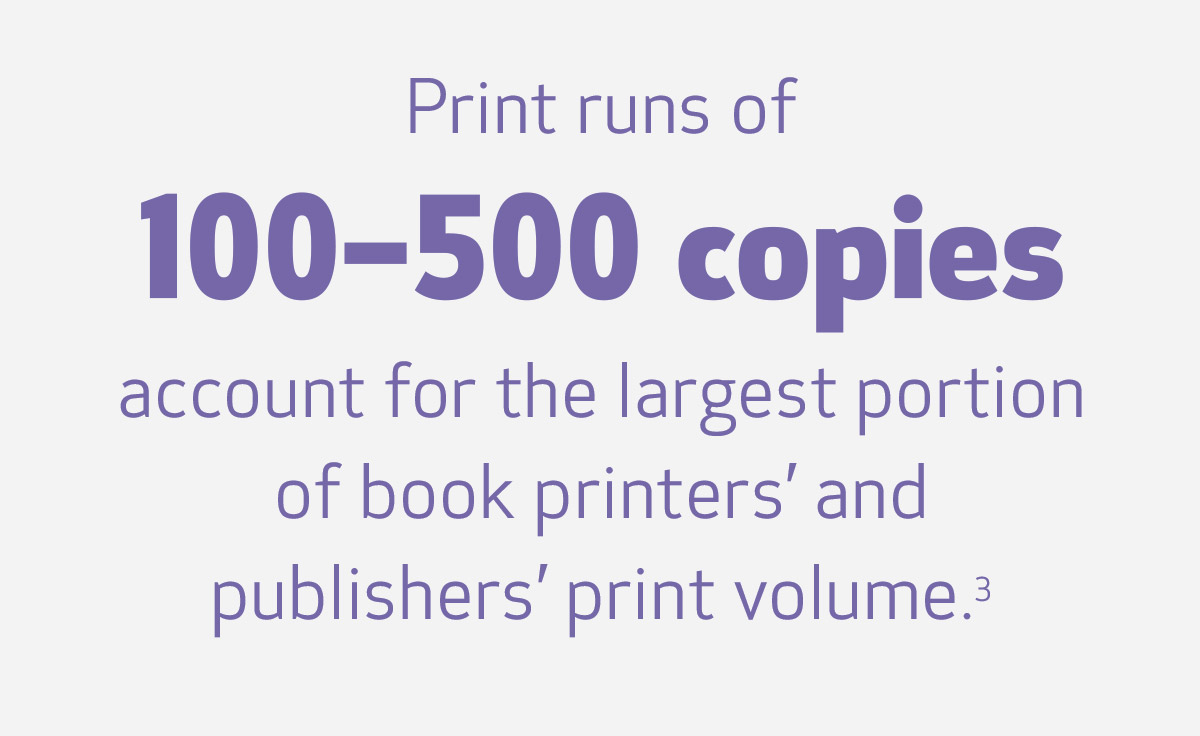Make an impact on print readership
TOP TRENDS IN TODAY’S BOOK MANUFACTURING
Not too long ago, book printing seemed like a dying breed, with e-books and easily accessible internet content being all the rage. However, book printing has not only stuck around, it’s become a trend — a “new” and cool way to digest content in today’s overly saturated digital world. Even though print is rebounding, there is emerging technology that has disrupted today’s book market. Printers need to evolve with these trends to help meet the various demands of publishers and readers.

2“Book Reading 2016,” Pew Research Center, conducted March 7–April 4, 2016. (Note: “Digital Books” includes e-books as well as audio books.)
Shorter run lengths
Publishers want to have better control over costs and inventories as well as find new revenue streams from reprints, backlists, and out-of-print titles. This has led to a need for shorter print runs, especially for reprints. The ability to cost-effectively print smaller runs is creating the growth of custom publishing, self-publishing, and book versioning — something that’s only been possible recently.
In a world where readers are bombarded with digital content, print is making quite the comeback.
Production inkjet technology is ideal for providing cost-effective production for short to medium run lengths due to its flexibility, high speed, low waste, and low running costs. In fact, I.T. Strategies, custom consultants for digital print vendors, predicts a 29 percent compound annual growth rate in inkjet book pages from 2014 – 2019.1

Increased use of print on demand
With print on demand (POD), books can be available for as long as the publisher and reader want. POD also allows self-publishing authors and independent publishers that don’t have the financial resources to print and store thousands of books to instead print only what’s needed — quickly and inexpensively.
Also, the latest digital printing technology, such as production inkjet, provides high-quality POD books that are comparable to offset and other traditional printing processes used today. With an array of high-speed, high-quality commercial inkjet printers, workflow solutions, and finishing options to choose from, book printers can help increase efficiency, print quality, and keep costs down.

3INTERQUEST, 2016.
Interestingly, print has emerged as a crucial part of the multichannel mix.
Making content available across all channels
Today’s readers are in control of how they access content, and they expect it to be easily accessible in their channel of choice, both in digital and in print. Publishers, authors, and book manufacturers can drive readership and make content available where and when readers want it by providing access to content across a multitude of channels. Interestingly, print has emerged as a crucial part of the multichannel mix. In a world where readers are bombarded with digital content, print is making quite the comeback. There’s nothing quite like the impact and timelessness of a favorite book.

In conclusion
Today’s emerging trends in book manufacturing are creating new opportunities for book printers as well as enabling them to meet the demands of publishers and the modern reader. Book printers that are willing to embrace and implement these trends will open the doors to success today and in the future.
1“Research on Emerging Print Markets,” I.T. Strategies, April 2015, p. 16.
